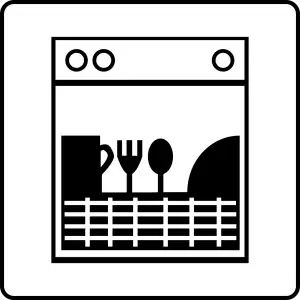Revive and Restore: Mastering the Art of Cleaning Your Cast Iron Skillet at Home

- Gather the necessary supplies for cleaning
- Step-by-step instructions for cleaning a cast iron skillet
- Allow the skillet to cool down completely
- Use a stiff brush or sponge to remove any food residue
- Rinse the skillet with hot water
- Dry the skillet thoroughly
- Apply a thin layer of oil to prevent rusting
- Tips for preventing and removing stubborn stains
A cast iron skillet is not just a cooking tool; it is an heirloom that can be passed down through generations. To ensure its longevity and optimal performance, proper cleaning and maintenance are essential. A clean cast iron skillet not only enhances the flavor of your dishes but also prevents rusting and prolongs its lifespan. In this article, we will guide you through the art of cleaning your cast iron skillet at home, ensuring that it remains a cherished piece in your culinary arsenal.
Gather the necessary supplies for cleaning
To properly clean your cast iron skillet, you will need a few essential supplies. First and foremost, you'll need a stiff brush or sponge to remove any food residue. Make sure the brush has firm bristles that can effectively scrub away any stuck-on bits without scratching the surface of the skillet. Additionally, you'll need hot water for rinsing the skillet. The hot water helps to loosen any remaining food particles and makes it easier to clean. Lastly, you'll need a clean cloth or paper towels for drying the skillet thoroughly after washing. Having these supplies on hand will make the cleaning process much more efficient and effective.
Step-by-step instructions for cleaning a cast iron skillet
1. Allow the skillet to cool down completely.
2. Use a stiff brush or sponge to remove any food residue.
3. Rinse the skillet with hot water.
4. Dry the skillet thoroughly.
5. Apply a thin layer of oil to prevent rusting.
Allow the skillet to cool down completely
After cooking a delicious meal in your cast iron skillet, it's important to allow the skillet to cool down completely before attempting to clean it. This is crucial because cleaning a hot skillet can cause damage to the seasoning and potentially burn you. So, resist the temptation to immediately start scrubbing away those food remnants and give it some time to cool off. Patience is key when it comes to maintaining the longevity of your cast iron skillet.
Use a stiff brush or sponge to remove any food residue
To remove any food residue from your cast iron skillet, use a stiff brush or sponge. Gently scrub the surface of the skillet, making sure to reach all corners and crevices. This will help loosen any stuck-on food particles and make it easier to clean. Avoid using harsh abrasives or metal scouring pads, as they can damage the seasoning of your skillet. Instead, opt for a brush with firm bristles or a non-abrasive sponge that won't scratch the surface.
Rinse the skillet with hot water
After using a stiff brush or sponge to remove any food residue from your cast iron skillet, the next step is to rinse it with hot water. This helps to further clean the skillet and remove any remaining debris. The hot water also helps to loosen any stuck-on food particles, making them easier to remove. Make sure to thoroughly rinse the skillet, ensuring that all soap and food residue are washed away. This step is crucial in maintaining the cleanliness and longevity of your cast iron skillet.
Dry the skillet thoroughly
After rinsing the skillet with hot water, it is crucial to dry it thoroughly. Leaving any moisture on the surface can lead to rusting. To ensure a completely dry skillet, use a clean kitchen towel or paper towels to absorb any remaining water. Pay special attention to the handle and any crevices where water might collect. Allow the skillet to air dry for a few minutes if needed. Remember, a well-dried skillet is essential for maintaining its longevity and preventing any damage.
Apply a thin layer of oil to prevent rusting
After thoroughly drying your cast iron skillet, it is crucial to apply a thin layer of oil to prevent rusting. This step is vital in maintaining the longevity and performance of your skillet. To do this, simply pour a small amount of oil onto a paper towel or cloth and rub it all over the surface of the skillet, including the handle. Make sure to coat both the interior and exterior surfaces evenly. The oil acts as a protective barrier, preventing moisture from coming into contact with the iron and causing rust. Additionally, it helps to maintain the skillet's non-stick seasoning. Remember to use a high smoke point oil such as vegetable oil or flaxseed oil for best results. By regularly applying this simple yet effective technique, you can ensure that your cast iron skillet remains in pristine condition for years to come.
Tips for preventing and removing stubborn stains
1. Avoid using harsh soaps or abrasive cleaners as they can strip the skillet's seasoning. Instead, opt for a gentle dish soap or a paste made from baking soda and water.
2. If you encounter stubborn stains, try scrubbing them gently with a mixture of coarse salt and oil. The salt acts as an abrasive while the oil helps to lift the stain.
3. For particularly tough stains, create a paste using equal parts vinegar and baking soda. Apply it to the stained area and let it sit for a few minutes before scrubbing with a soft brush.
4. To remove rust spots, use steel wool or a scouring pad to gently scrub the affected area. Once the rust is removed, re-season the skillet to prevent further rusting.
5. Regularly inspect your skillet for any signs of rust or staining and address them promptly to prevent them from becoming more difficult to remove.
By following these tips, you can keep your cast iron skillet looking pristine and ensure its longevity in your kitchen arsenal.
In conclusion, mastering the art of cleaning your cast iron skillet at home is essential for maintaining its longevity and ensuring optimal cooking performance. By regularly cleaning and properly caring for your skillet, you can enjoy the many benefits it offers. A clean cast iron skillet not only enhances the flavor of your dishes but also prevents the transfer of unwanted flavors and ensures even heat distribution. Additionally, a well-maintained skillet is less prone to rusting and will last for generations to come. So, take the time to revive and restore your cast iron skillet, and let it continue to be a beloved tool in your culinary journey.
Published: 12. 12. 2023
Category: Home



